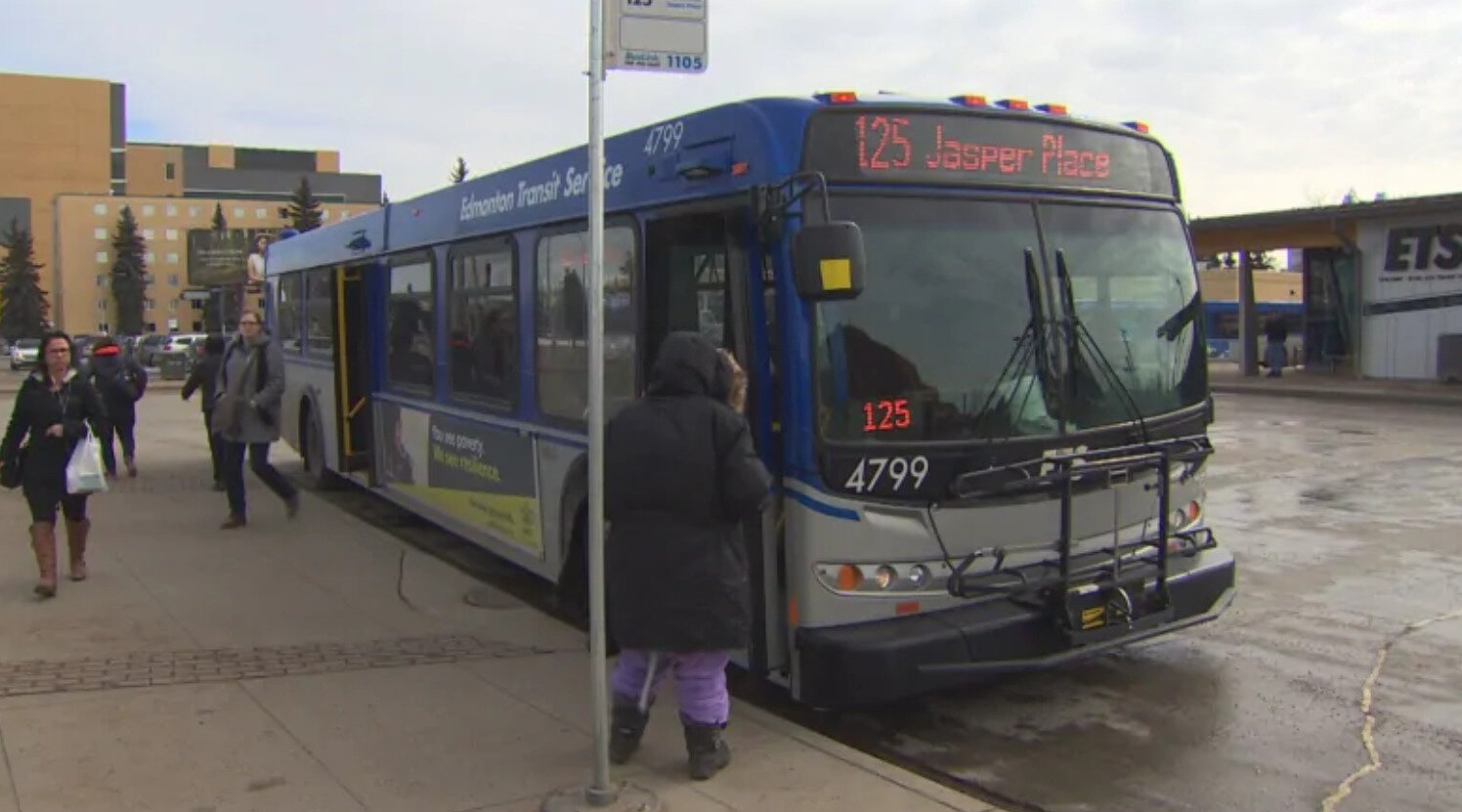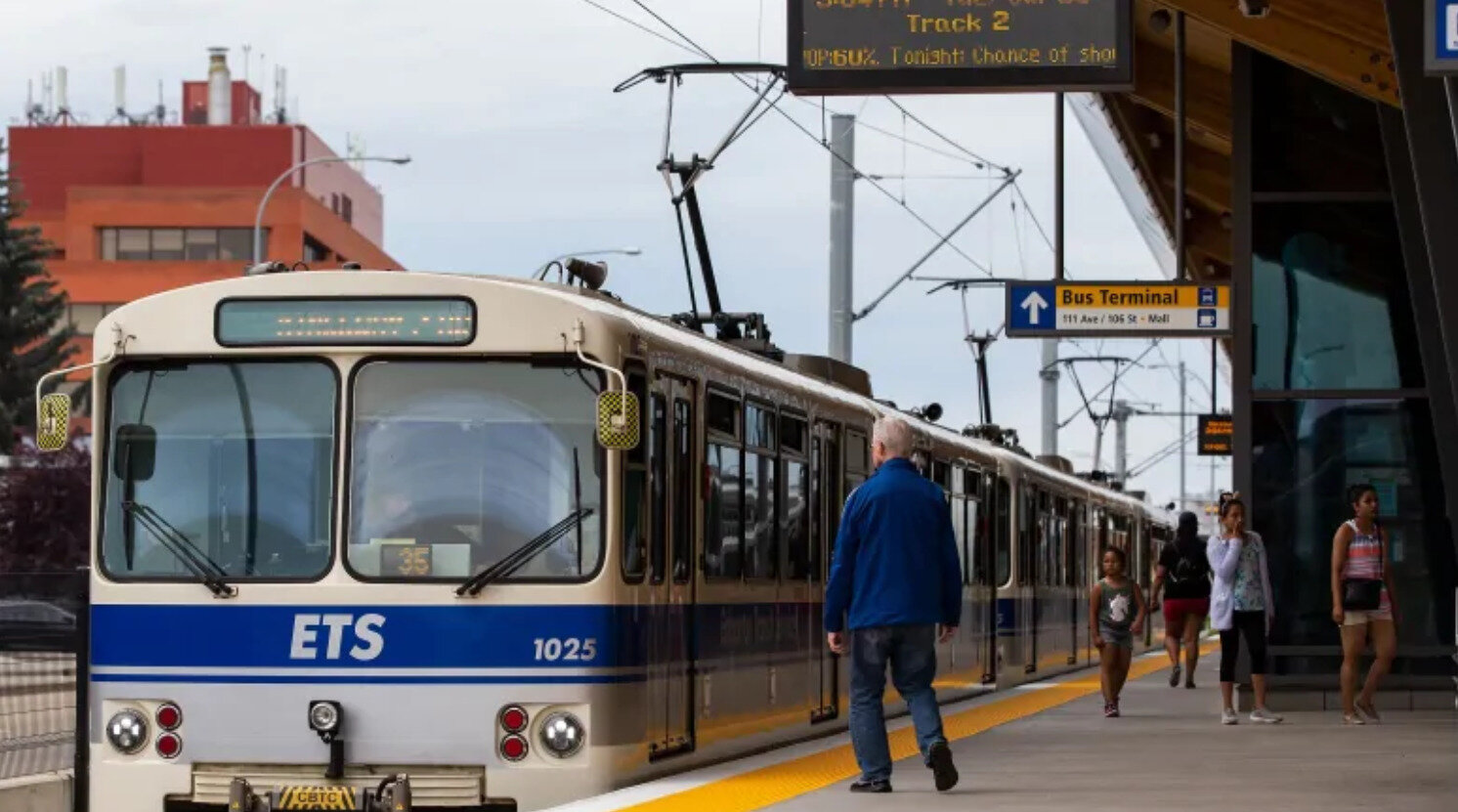Mass Transit - City Plan Blog Series Part 2
A large goal of the City Plan when we reach 2 million is to have 50% of trips be made by transit and active transportation. The Mass Transit Strategy ties directly into transportation, providing connections and supporting growth. Specifically this means, Transit-Oriented Development around nodes and corridors, annexations, new residents, and the desire for ‘Health and Beauty’ in communities. As indicated in the briefing book for the City Plan: The Municipal Development Plan defines how the city grows and develops (currently The Way We Grow) and the Transportation Master Plan defines how mobility systems work (currently The Way We Move). It will incorporate, modernize and adapt key directions from The Way We Prosper, The Way We Green and The Way We Live. Transit Strategy is based on five broad themes:
Integrating service with community planning and design
Balancing the approaches to system funding and fare revenue sources and policies
Adopting a market-responsive approach to transit network and service design
Improving the customer experience
Developing organizational capacity to manage, plan and operate the system effectively
The 2015 Edmonton and Region Household Travel Survey showed that Edmonton area residents made 3.14 million trips on an average weekday, of which 77.6% were by car and 8.6% by transit. While transit has a long history in Edmonton—the city pioneered modern urban light rail transit (LRT) in the 1970s—transit mode share has not changed meaningfully since 1994. Recent development trends have seen population and employment growth in the outer suburbs outpace that of central Edmonton where much of the city’s transit network is focused. As the City Plan is developed to support a future of 2 million people, the City of Edmonton will be looking to maintain and increase the 8.6% transit mode share in the future, by doing some of the following:
Serve growing demand while recognizing the capacity limitations of the existing system
Connect communities within the expanded physical footprint of the city in the future
Encourage development of mixed-use housing, shopping, and employment areas along a network of walkable streets served by high-quality transit using Transit-Oriented Development
Consider opportunities related to employment areas and residential districts that are currently more challenging to serve
Build on connections to the rest of the Region
The proposed Mass Transit Network for the City Plan will include three key categories of transit hierarchies. Regional, Rapid and Urban-Frequent. Demand is high for key parallel north-south and east-west mass transit lines. A mass transit option that serves the airport can also serve demand to the downtown area from the southern parts of the City, including the newly annexed lands. Edmonton’s transportation context is unique, but the challenges it faces are similar to those in other large Canadian cities. Edmonton is a particularly youthful and wealthy city in the Canadian context, two attributes that simultaneously work with and against developing a strong transit culture. While transit usage is high among the youngest of Edmonton’s adults, the data suggests that transit use declines very rapidly after the age of 25. This could be related to the city’s high median income and high rate of auto ownership. The city is continuing to sub-urbanize and travel markets are changing as a result. The significant majority of residential development is occurring at the urban fringe, and a high percentage of employment is located in suburban areas. The resulting travel patterns—from low-density suburban residence to low-density suburban jobs—are very difficult to serve by transit in a manner that is both economical and time-competitive with the car. This is a contributing factor to the paradoxical stagnation of transit mode share in an era of increasing transit ridership. While the number of transit users is increasing, it is dwarfed by the number of people living and working in areas where transit is not as feasible a travel alternative. While the regional and rapid transit network is highly-focused on the downtown core, travel demands are evolving. The proposed 2020 bus network is intended to provide enhanced connections to the evolving LRT network, and also refocus the bus routes on providing market based services. This commuting focus includes crosstown trips in the outer parts of the City, and more streamlined and frequent services within the inner and central parts of the City. The future distribution of people and jobs will be a critical determinant of where, when, and how new mass transit lines will be built. The Mass Transit Study is being conducted concurrently with a long-range review of land use planning in the Edmonton region. This presents an excellent and rare opportunity to ensure that critical decisions about development influence the design of the transit network, and that transit and transportation concerns influence the planned urban structure.
An examination of Edmonton’s peers and other cities suggests there are four key mass transit success factors that should be considered in the development of plans and projects:
Urban structure and land use: As previously described, transit is most successful when it is convenient, and it is most convenient when it is located close to where many people live, work, or both. As such, more people and jobs near rapid transit is linked to higher transit ridership.
Priority: An exclusive right-of-way reduces travel times and improves reliability, both of which contribute to making transit more convenient. However, providing priority is often costly, and needs to be balanced against the ability to provide high quality service over a wide area.
Competitiveness: Transit needs to be time- and/or cost-competitive with alternative modes in order to attract riders. While an efficient and resilient multi-modal transportation system is critical to the economy of any city, policies and capital projects that seek to drastically improve auto travel time—even in conjunction with transit improvements—can have negative impacts on transit ridership.
Frequent transit network: Under the most ambitious plans for transit oriented development, the substantial majority of transit riders will not live within walking distance of rapid transit. Therefore, any mass transit network planning must be paired with the development of a network of high-frequency bus routes that complement and feed higher-order services.
Continued outward expansion will be best served by improvements to the regional transit network. Connecting the growing suburbs to the central business district by commuter rail, for example, would help to improve travel time competitiveness, while relieving ridership congestion on LRT lines. Expansion of the regional bus network with “hub-to-hub” service would serve a similar purpose for trips with origin and destination outside of the downtown. This will be one of the focus areas of the emerging Regional Transit Service Commission. The mass transit network strategy can be further refined by identifying intermodal transit hub locations, based on transportation and land use considerations. These are referred to as mobility hubs, and are an important form of investment in transit infrastructure and help to support and incentivize large scale transit-oriented development. They tie important pieces of the proposed land use and transit strategies together. Mobility Hubs are strategically located in nodes or can be centred on a mass transit station. They serve as critical places for trip origins, destinations and transfer points. Furthermore, they create connectivity to different modes, supporting a mobility system that allows people to seamlessly move from one travel option to another and to conveniently fulfill their daily needs. This is where different modes of transportation come together including walking, biking, transit and shared mobility options to create connections within Edmonton and to the region. Existing examples of possible emerging mobility hubs where key connections between routes are made include Century Park and West Edmonton Mall. An integrated and coordinated family of transit modes is necessary to best meet the needs of evolving travel markets. As Edmonton develops into a city of 2 million people, it will require a diverse and complementary system of transit modes to meet the needs of the travelling public. The nature of this service must naturally be tailored to Edmonton’s unique needs.
It’s no secret that our transit system is struggling and in need of additional support to become a viable option for Edmontionians. At our future population of 2 million if we are looking to achieve those 50% of trips being made by transit and active transportation, on top of improving our systems, we need to look at changing the culture around taking transit and our transit system. With the extensive technical reports that City Administration has conducted with regards to mass transit, among other things, that indicates to me that Edmonton has a clear direction on how it would like to move forward in improving our transit system. However, as the city continues to grow, it is our responsibility to sustain conversations around transportation to ensure that it is a proper reflection of what our citizens want.
Written by R.Maggay and A.Knack



